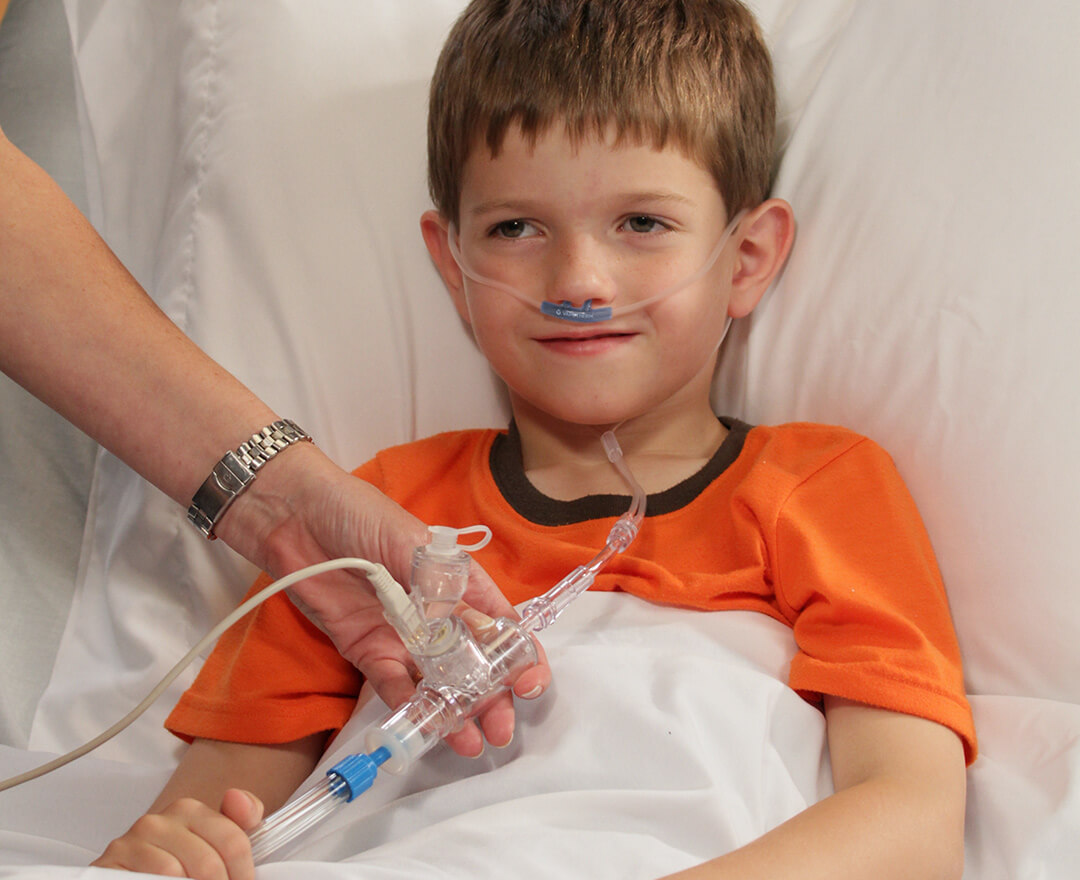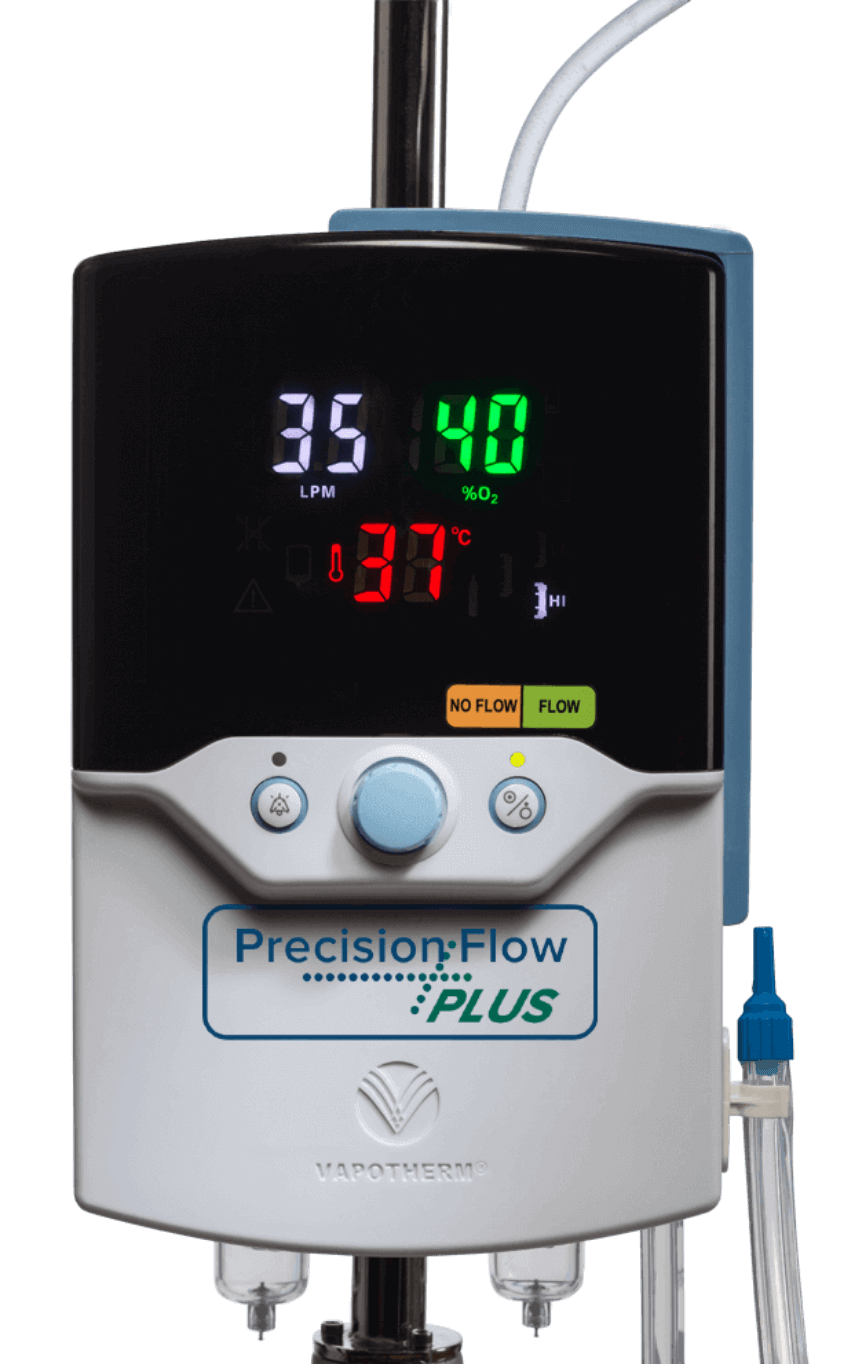High Velocity Therapy for Pediatric Patients
One Mask-Free Respiratory Tool.
Multiple Levels of Patient Acuity

The Comfort That Helps with Compliance
Provide acute relief of respiratory distress, including tachypnea and attendant tachycardia, by decreasing work of breathing and cardiac workload with a comfortable nasal cannula interface. Kids can eat, drink, talk, receive aerosolized medication, and take oral medications without interrupting therapy.
Redefining the Continuum of Care
Whether you’re treating respiratory distress symptoms resulting from critical bronchiolitis, asthma, pneumonia, or other diseases, Vapotherm high velocity therapy is a frontline tool to help your patients. It is an advanced form of high flow nasal cannula that can be used to provide Mask-Free NIV®. This one respiratory tool can provide ventilatory and oxygen support for patients in a wide array of respiratory distress acuity —including hypercapnia, hypoxemia, or dyspnea.
Increased Acuity Levels of Respiratory Distress


Keep Kids Off the Vent
Vapotherm high velocity therapy is an alternative to NiPPV and CPAP for treating undifferentiated respiratory distress, but also offers an open system, comfortable interface, and optimal humidification of breathing gases, often associated with high flow nasal cannula. As such, using high velocity therapy as primary respiratory support could significantly reduce intubation rates. [1] [2]

Choose the Right Care Area for Your Patient Needs
The Vapotherm Precision Flow® system could give you disposition options. Efficacious enough for PICU needs, its integrated alarms and digital settings control also offer safe and effective delivery of therapy on the floor.
The optional Vapotherm Transfer Unit furthers utility by allowing therapy to continue during play time, ambulation or transport.
Patients
- Comfortable and well tolerated
- Patients do not require training for compliance
- Ability to eat, drink, speak, and take oral medication
Providers
- Simple and fast set up
- Easy interface fitting
- Deliver continuous or intermittent aerosolized medication
- Integrated patient safety
alarms
Institutions
- Does not increase risk of intubation
- Reduced intensity of care
- Reduced length of stay by up to 33% [1]

A Potential Alternative to CPAP for Bronchiolitis
Watch Dr. Alexandre Rotta present research comparing Vapotherm high velocity therapy with CPAP in the treatment of infants with critical bronchiolitis

Request a Demo
Our team is standing by to teach, guide, and help integrate Vapotherm high velocity therapy into your hospital’s pediatrics respiratory care programs.
SOURCES: [1] Christine McKiernan, Lee Chadrick Chua, Paul F. Visintainer, Holley Allen. High Flow Nasal Cannula Therapy in Infants with Bronchiolitis. The Journal of Pediatrics, Volume 156, Issue 4, Pages 634-638. [2] Mayfield, S., Bogossian, F., O’Malley, L. and Schibler, A. (2014), High-flow nasal cannula oxygen therapy for infants with bronchiolitis: Pilot study. J Paediatr Child Health, 50: 373–378. doi:10.1111/jpc.12509
